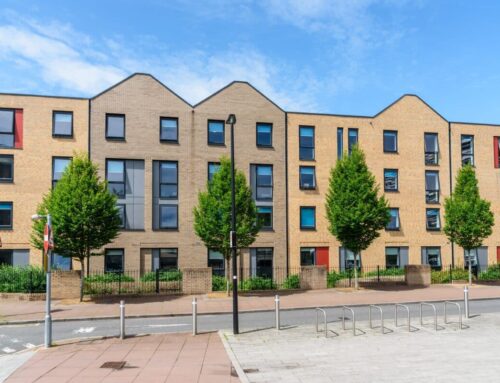Darren Bagnall from Block in a Box explains how service charges work, how Right to Manage can be used to take control of them and how leaseholders can legally challenge excessive charges without needing to take over.
Service charges are a contentious issue for leaseholders. Many are facing increasingly expensive demands in an already tricky financial market with little control over how their funds are spent.
The frustration this causes is understandable and the increase in Right to Manage applications over the last few years is evidence of this spike in leaseholders wanting to take back some control.
How Service Charges Work
Service charges are payments that leaseholders make to cover the costs of maintaining and managing the building they live in. Cost varies between properties depending on the level of services provided and the condition of the building.
The charges are typically paid annually or quarterly and cover a range of services related to the common areas of the building:
- Building maintenance
- Repairs
- Cleaning costs
- Utilities
- Buildings insurance
- Management fees
Service charges should be based on reasonable costs with transparency about where the money is spent. However, many leaseholders have concerns about excessive charges and poor value for money.
The Rise of Service Charges and Increased RTM Applications
According to a May 2024 report by The Negotiator, rising service charges have led to a growing number of RTM applications across the UK, as leaseholders seek greater control over the financial management of their buildings:
“Soaring service charges for leasehold flat owners are thought to be behind a 20% rise in applications to set up Right To Manage (RTM) and flat management companies during the past year, research from Direct Line reveals.”
Many leaseholders are dissatisfied with the lack of oversight and control over how their money is spent. By forming an RTM company, leaseholders can take over the responsibility for managing the building from the freeholder and potentially make more cost-effective decisions, giving them the power to reduce these costs.
Using RTM to Reduce or Control Service Charges
The Right to Manage (RTM) is a legal right granted under the Commonhold and Leasehold Reform Act 2002. It allows leaseholders to form an RTM company and take over the management of their block of flats without having to prove that the freeholder has done anything wrong.
RTM can be a powerful tool for leaseholders who feel that their service charges are excessive and wish to have more say over how their building is run. It can be used to reduce or control service charges through:
- Taking direct control over appointed contractors
When leaseholders form an RTM company, they take on the power to appoint contractors for services such as cleaning, repairs and maintenance. This is one of the most effective ways to reduce service charges.
Under RTM, leaseholders can ensure that multiple quotes are obtained and that only those offering the best value are chosen. Unlike many freeholders or managing agents who may have agreements with specific contractors, an RTM company can make independent choices that prioritise quality and cost-efficiency.
- Obtaining greater transparency
When an RTM company takes over, leaseholders gain full access to the accounts and have a say in setting budgets. This increased transparency helps ensure that money is spent wisely and in the best interests of all residents.
- Reducing managing agent fees
If the building was previously managed by an external managing agent (appointed by the freeholder), RTM leaseholders have the option to either manage the building themselves or appoint a managing agent of their choice.
This means they can either eliminate the cost of a managing agent altogether or hire one with a more competitive rate and a better understanding of their needs. Many RTM companies also prefer agents who are more responsive and willing to collaborate, ensuring better value for money.
- Taking a flexible approach to maintenance
Many freeholders have strict schedules for maintenance which may not always be necessary or may lead to work being done at higher costs. Under RTM, leaseholders can assess the actual needs of the building and decide when to carry out maintenance, ensuring that only essential work is undertaken and that it is done at the best possible price.
Legal Challenges to Excessive Service Charges
Even with RTM in place, there may still be situations where leaseholders need to challenge service charges. Understanding your rights and the legal avenues available can be crucial in keeping these costs under control.
- Section 19 of the Landlord and Tenant Act 1985
This Act states that service charges must be “reasonable.” If leaseholders believe that they are being asked to pay unreasonable charges, they can challenge these through the First-tier Tribunal (Property Chamber). The tribunal has the power to determine whether charges are reasonable and can adjust them accordingly. When RTM is in place, it is easier for leaseholders to scrutinise spending and if necessary, challenge unreasonable charges imposed before the RTM was established.
- Requesting a Summary of Costs
Leaseholders have the right under Section 21 of the Landlord and Tenant Act 1985 to request a summary of how their service charges are being used. This can help them understand where their money is going and identify any areas where charges seem excessive. RTM companies have a duty to provide these details which fosters ongoing transparency and helps to maintain trust among leaseholders.
- Requesting an Inspection of Accounts and Receipts
Leaseholders also have the right to inspect accounts, receipts and other relevant documents under Section 22 of the Landlord and Tenant Act 1985. This is a useful tool when questioning service charges. With RTM, leaseholders are already part of the management process, making it easier to review documentation and ensure costs are legitimate and accurately documented.
Is RTM the Right Solution for You and Your Block?
RTM is an effective way for leaseholders to challenge high service charges and take control over the financial management of their building. However, it’s not a magic bullet and it comes with responsibilities.
Leaseholders must be prepared to actively participate in managing the property or appoint professionals to manage it on their behalf. This requires a willingness to scrutinise costs and to ensure that all decisions benefit the resident community.







Leave A Comment